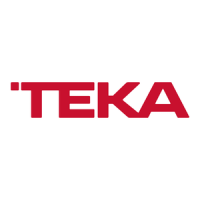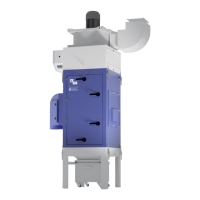The TEKA Airtech P10 is a filter unit designed for the extraction and filtration of polluted air, specifically targeting dusts and fumes generated from thermal joining and cutting of metals. It is particularly suitable for separating welding smokes from unalloyed, alloyed, and high-alloy chromium-nickel steels, meeting the highest welding fume separation category "W3" according to DIN EN ISO 15012-1.
Function Description:
The core functionality of the Airtech P10 involves drawing in polluted air, which is then purified as it passes through the surface of filter cartridges located in the unit's filter section. The separated dust is collected in a dedicated dust collecting tank. An automatic filter monitoring system continuously assesses the filter cartridges, indicating when cleaning or replacement is necessary. Once purified, the air is returned to the working environment via ejection nozzles. The system incorporates a particle sensor to detect an increase in particles, such as those caused by fire or a filter break, triggering an automatic shutdown of the device for safety. In the event of a fire, the filter area can be filled with extinguishing agent via a C-pipe connection.
Usage Features:
The Airtech P10 is designed for ease of operation and safety. It features a main switch for powering the device on and off, which also functions as an emergency off switch. An emergency stop button allows for immediate shutdown in critical situations, though it's important to note that the unit remains energized when switched off via this button and cannot be restarted until unlocked. The device provides clear status and error messages through a stroboscope flash and a signal horn, with detailed information displayed on the control unit. For specific applications involving stainless steel, the use of an intake element is mandatory to prevent hazards to respiratory tracts. The unit can be extended with an optional dust discharge unit, for which a separate operating manual is available. Proper electrical connection is crucial, requiring a qualified electrician for installation and maintenance, especially if the unit is equipped with a frequency converter. The fan's rotation direction must be checked during commissioning to ensure optimal extraction capacity.
Maintenance Features:
Maintenance of the Airtech P10 is crucial for its longevity and efficient operation. The system incorporates several features to facilitate this. Filter cartridges are reusable and are cleaned automatically when a preset differential pressure value is reached. If the alarm value is not undercut after cleaning, replacement is necessary. New filter cartridges can be pretreated with a filter aid (precoat) during commissioning to extend their service life. This precoating process involves the system being switched on and operating to disperse the filter aid effectively.
Regular maintenance tasks include:
- Reset to maintenance state: Before any maintenance, the unit must be switched off, disconnected from the power supply, and secured against unauthorized restarting. The compressed air hose must be disconnected, and the compressed air tank emptied by opening the drain valve.
- Cleaning filter cartridges: This is an automated process. Manual cleaning can also be initiated via the unit control.
- Replacing filter cartridges: This task requires two people and appropriate disposal containers (PE bags are recommended and available as spare parts). The process involves opening the service door, resolving clamping screws, removing the cartridge holder with the old filter, extracting the displacer, inserting it into a new filter, and reassembling. Only TEKA spare filters should be used to ensure proper functioning.
- Emptying the dust collecting tank: The dust collecting tank should be emptied when it reaches a maximum of 25% capacity, with a weekly check recommended. This involves cleaning the filter cartridges beforehand, disconnecting power, opening the service door, releasing toggle levers, and carefully removing the tank to dispose of the dust in a PE bag.
- Draining condensate: Condensation water from the compressed air tank must be drained regularly by slowly opening the drain valve.
- Visual inspections: Weekly visual inspections of the device, pipelines for dust deposits, and pneumatic pipes are recommended to check for defects, damages, loose connections, corrosion, and dust leaks.
- Functional tests: Monthly functional tests include switching on the device, checking for error messages, listening for unusual noises, performing manual dedusting, verifying dedusting shock counts, and ensuring sufficient fume/dust collection with a connected machine tool.
- Electrical tests: Annual electrical tests of lines and earthing connections must be performed by a qualified electrician according to national standards.
The operator is responsible for ensuring that all maintenance work is carried out by authorized and qualified personnel, wearing appropriate respiratory protection (half mask DIN EN 141/143 protection level P3) and handling filter elements cautiously to avoid dust dispersal. Collected dust and filter elements must be stored and disposed of according to national or regional regulations.


